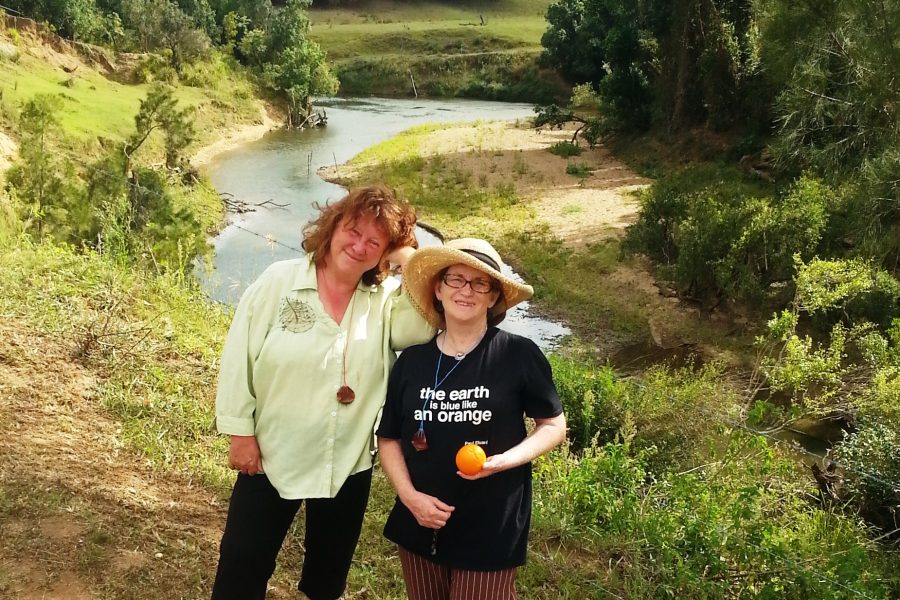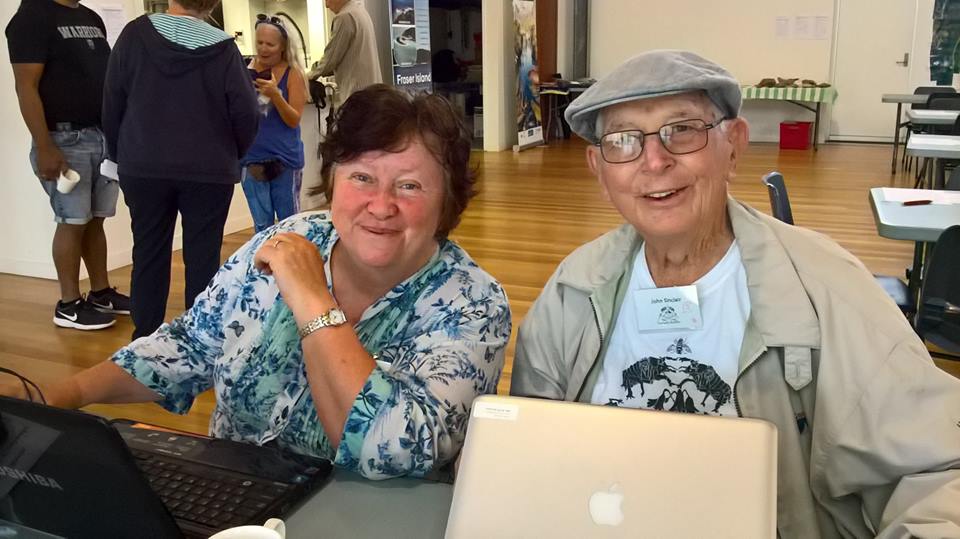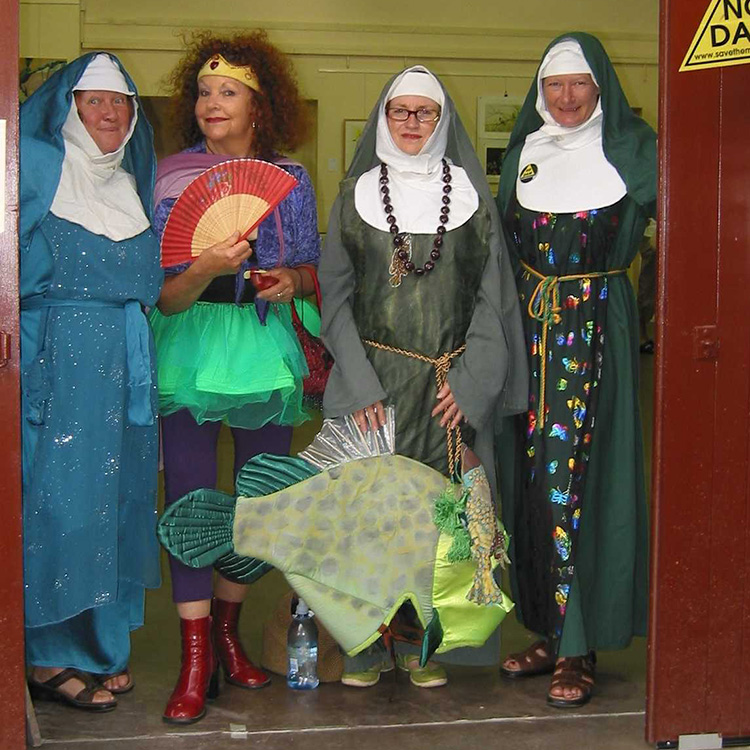The impetus behind Zela’s work is her desire to drive towards the unfolding of a just, harmonious and environmentally sustainable society.
Her methodology is based on experiential learning, using a balance of head, heart and hand. Zela employs methods which link personal satisfaction and creativity with a social order based on resourcefulness and elegant holistic solutions to current challenges. She is a creative thinker, a dynamic presenter and an active contributor to the public dialogue around finding our way a sustainable future.

Zela (left) and friend Joolie Gibbs, another arts/science practitioner, at the Bunya Dreaming Festival (2014) organised by Kabi Kabi elder Beverly Hand and Barung Landcare
Bioblitz participation

Zela with John Sinclair at the 2018 Bioblitz
Taking part in Bioblitzes is one of the ways Zela combines her love of the coastal landscapes around Cooloola with her pursuit of both science and art. This interest resulted in her inclusion as one of the artists invited to be part of the Wild/flower Women 3 exhibition in 2020.
A Bioblitz is an intense period of biological surveying in an attempt to record all the living species within a designated area. Groups of scientists, naturalists and volunteers gather conduct an intensive field study over a weekend based at Rainbow Beach under the auspices of Cooloola Coast Care. A number of new species have been discovered through these events. (LINK)
At the 2018 Bioblitz Zela worked with her friend and mentor John Sinclair, OA, founder of FIDO (Fraser Island Defenders Organisation) to liaise with the representatives of the Butchulla people and has continued to do so ever since. John Sinclair passed away on 3 February 2019, and Zela is now engaged in examining his work and its significance through a PhD with the University of the Sunshine Coast.
Sisters of Mary
Links between arts and activism
Zela credits the 2006 Bathing with Mary installation at Federal Hall with opening her eyes to the power of the connection between art and place. “I sat at a little desk by the stream and wrote a letter to the Mary,” she recalls. “In that few minutes, I realised that my whole life had been circumscribed by this body of water, from my birth in Maryborough, holidays in Hervey Bay to my present life in Gympie.” She was enthralled by Wendy McGrath’s camphor laurel bedspread, and Francois Davin’s suspended canoe, Pirogue. Sally Spencer’s evocation of the almost-lost Mary River Turtle showed her an enticing hybridization between natural science and art. “I had discovered site-specific art” Zela laughs, “although I hadn’t heard the term then. My eyes were opened to work being done by tireless people like the members of Tiaro Landcare who protect the remaining nests of turtle eggs and Gympie Landcare who were very active in revegetating denuded river banks.”
Just a few short years later the shattering news of the proposal to dam the Mary River at Traveston Crossing galvanized those who loved the river into action. Zela shared her idea for a “sisterhood” of those devoted in some way to the Mary with her close friends including Joolie Gibb and Sue Johnson. The “Sisters of Mary” was born. Zela was seen as the Mother Superior and chief strategist of the Order which went on to include “River Lady” Glenda Pickersgill, activist Tricia Roth, local art identity Gail Godwin and a dozen others. Sisters spoke, sang and delivered street theatre at many rallies, demonstrations and cultural and educational forums including Woodford Folk Festival. Zela’s paper “In Defence of Mary”, written for the 10th International River Symposium in Brisbane, contained her research into how the cohesive and effective community resistance to the Traveston Dam proposal had been fostered by networks created during the site-specific art projects Bathing with Mary and later, Farming with Mary. Her presentation to the Symposium was attended by about 40 river advocates from Australia, India, and other countries. When the Sisters were characterised by government critics as flippant or irreverent, Zela was forced to take up the challenge of articulating a new attitude towards the natural world which she saw in many traditional cultures and came to believe was necessary for all if we are to live sustainably on this planet. In response to attacks by the Bligh government in 2007, she wrote:
When the Sisters of Mary put on their green and blue robes, they remind all who are ready to understand that no amount of money can replace the health of a natural system and the unique creatures which find their ecological niche within it, and that advocacy for the wisdom, beauty and balance of nature must be our highest duty.
